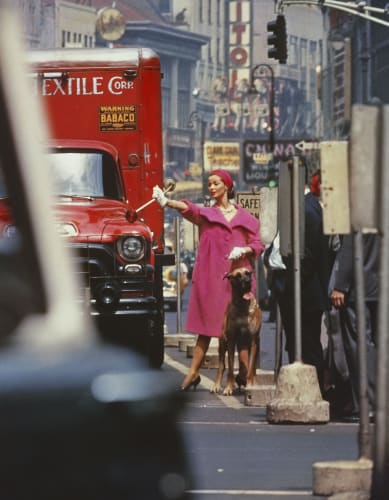William Klein was born in New York to a family of poor Jewish immigrants in 1928. Feeling aliented from mass culture, he sought refuge at the MoMA at the age of twelve. When he was fourteen, he enrolled in sociology courses at City College of New York. After serving in the army during World War II, Klein moved to Paris in 1949 and briefly studied painting with Fernand Léger. His first photographs were made in 1954 on a visit to New York, and were published two years later in a book entitled Life Is Good and Good for You in New York: Trance Witness Revels. The verve of these pictures, made with a hand-held camera under diverse lighting conditions, won him a contract with Vogue, where his radically casual style pioneered a new philosophy of fashion photography.
Klein's photographs of societal events replaced the prevailing conception of elegance with renderings that emphasize the moment rather than the individual. What is lost in precise description, is redeemed in the broad patterning and spontaneity of the captured instant. Klein’s photographs are brilliant transcriptions of a passing time. They convince the viewer that the meaning of life is carried in these ephemeral moments, described with the intimate scope of a turning head or a lifting arm. The loss of definition in the images results in vivid forms that come dangerously close to incoherence and confusion. In Klein's understanding, "it's not necessary to make order out of chaos. Chaos itself is interesting."
